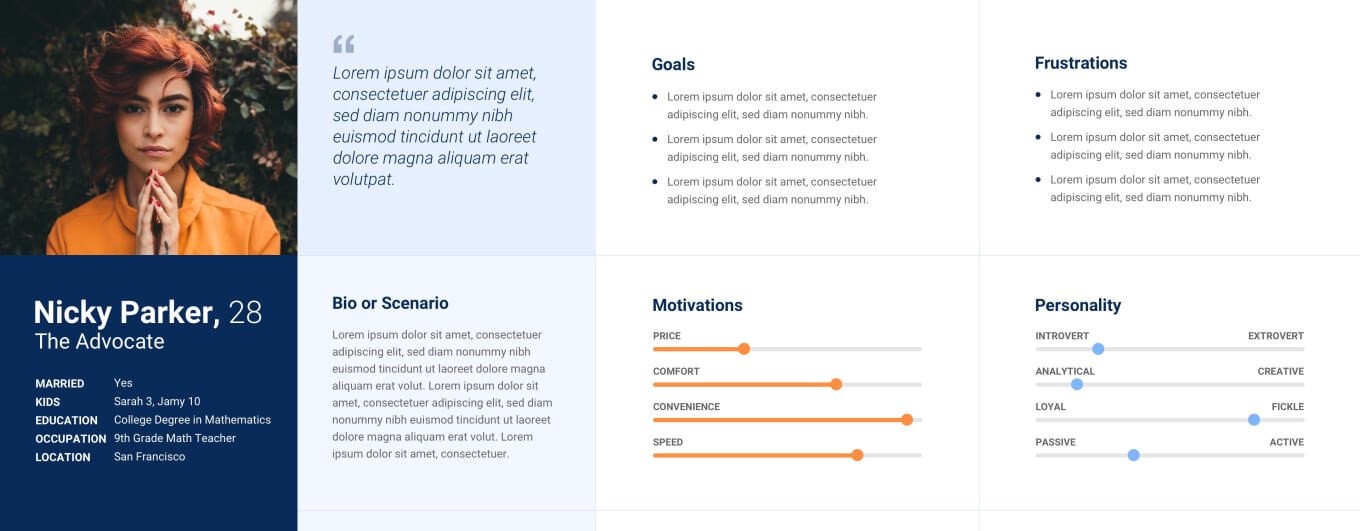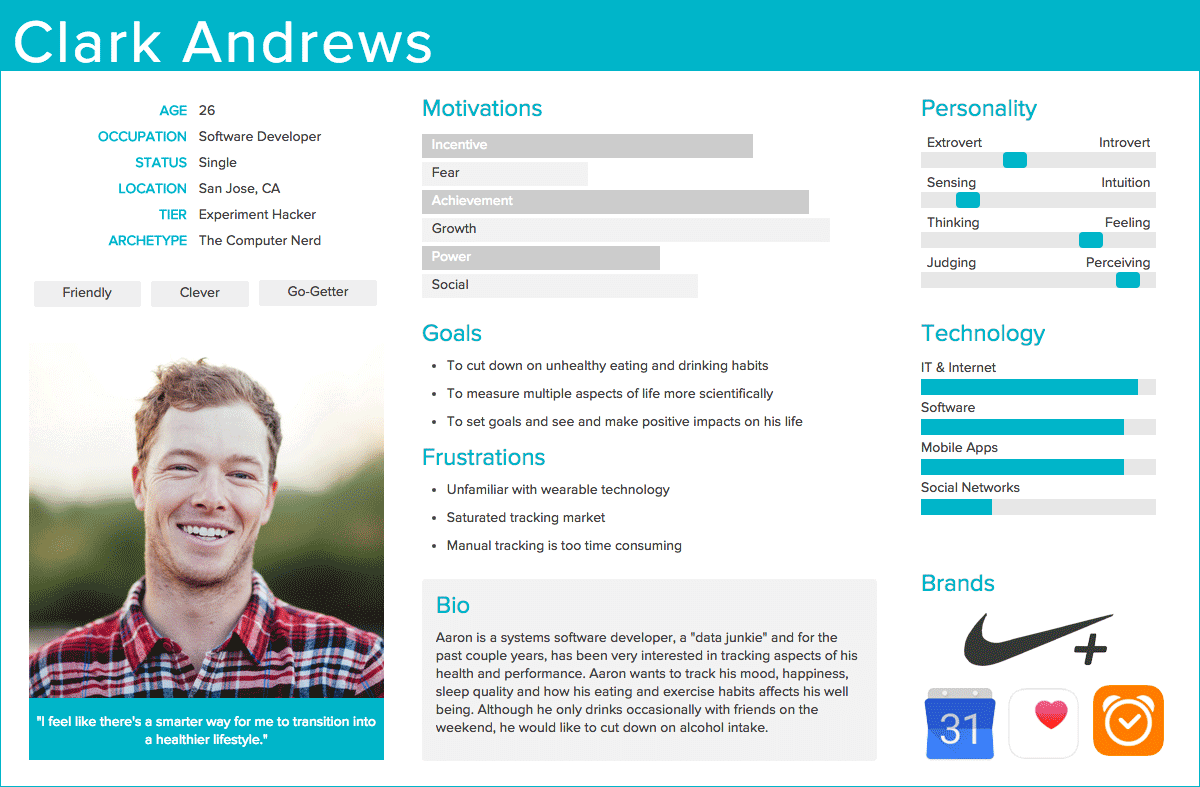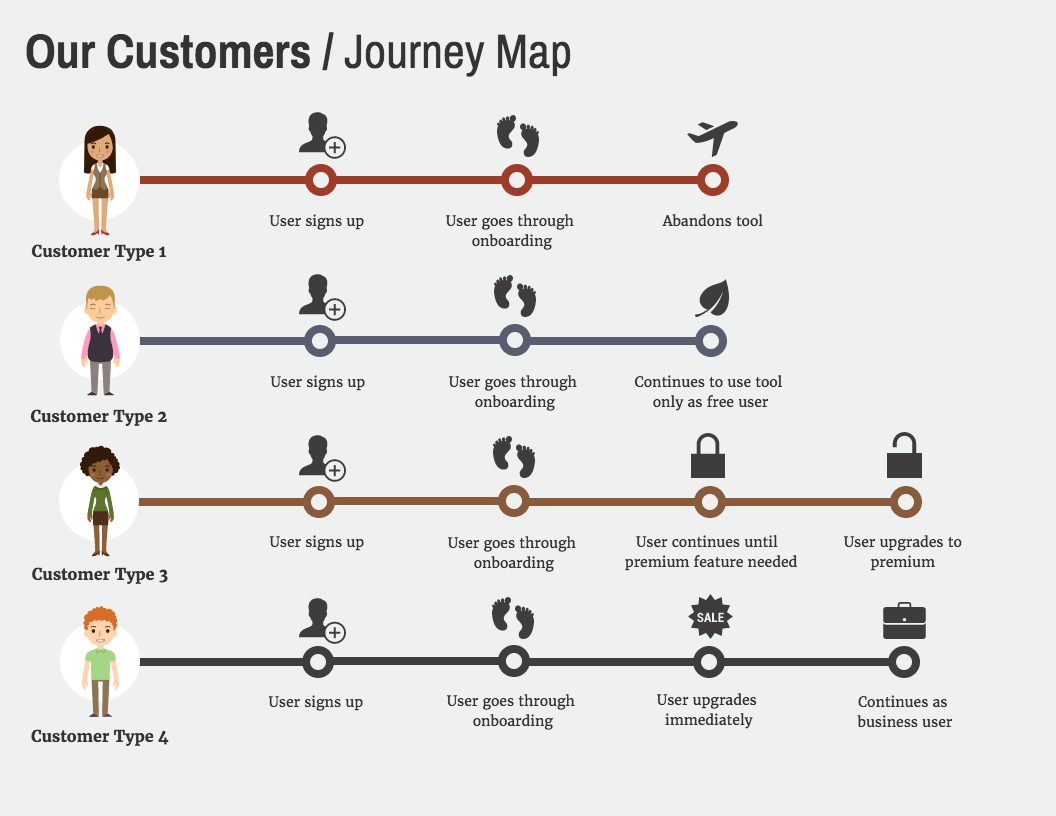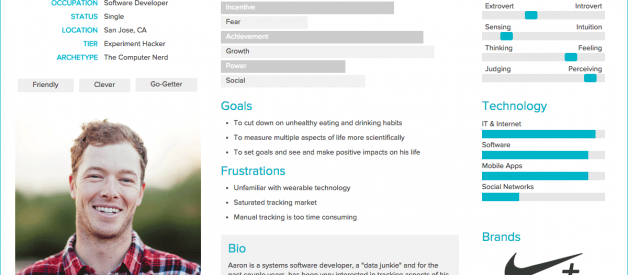
What is persona in UX?
Personas are commonly used tools in UX design. It?s a representation of the real target audience data, collected in previous research phases such as user interview. It is suggested at this point to gather information from at least 6 interviews. The information collected will overlap and this is where you have to look for patterns. You can form personas from these overlapping information.
Personas are archetypical users whose goals and characteristics represent the needs of a larger group of users. Persona representations include behavioral patterns, goals, motivations, skills, attitudes, and background information, as well as the environment in which a persona operates. By using personas, our entire team can stay focused and create a design that serves real users.
Parts of personas
- Photo
- Name
- Skills
- Description
- Goals
- Problems
How do we create personas?
- The first step of creating a persona is to collect data about the users? motivations, expectations, difficulties, tasks, and goals from the users themselves.
- Second, we harmonize the collected data by exploring patterns of behaviors, universal and specific needs as well as user goals.
- Last, we build a description of each of our user archetypes by creating an actual person with a face, thoughts, fears and background stories. This is important because we can gain more empathy by thinking of them as real humans with real problems.
How do personas look like at the end?
The output is a graphical persona sheet. It is detailed enough to conjure empathy but it does not contain information irrelevant from the given project. It includes demographics and some additional personal details such as persona?s name and picture. More importantly, it includes what we know about her thoughts, feelings, knowledge, expectations, problems, and behavior.

How do personas fit into a design process?
Personas are replying to the question ?Whom we are designing for?? Defining the target groups of our products and services is one of the basic principles of UX and service design; if you?re trying to design for everyone you?ll end up designing for no one.
What is the use of personas?
Since personas are representing the user groups we want to serve, they are leading our way in the design process by reminding us which expectations, difficulties, behaviors and final goals our users have. We are relying on personas in every subsequent step such as creating flows, functions or interactions.
Further uses of personas
A persona is not only useful for designers but it can be further utilized whenever a certain business or marketing decision has to be made. It can also be used as a reference point to help newcomers understand the product vision and even layout new possible directions for innovation. A persona is not a final product. Instead, it is constantly changing and can be updated as a function of the product?s current state. This means that a persona can become an organic part of product development throughout the product?s lifecycle.
Finally, share your personas with as many colleagues as possible. Create posters of your personas and hang them throughout your office. Your goal is to create a shared understanding of just who you work for and how everyone can better serve them.
Personas and empathy maps
An empathy map is similar to a persona in the sense that it is also used as a guiding light throughout the design process. It gives a detailed portrayal of the given user types by answering four simple questions: what the user thinks, says, does and feels. Overall, empathy maps are great tools to help designers, product managers, stakeholders and other team members to understand users better, gain empathy for them and get familiar with their behavioral patterns.

Personas and mental models
With the help of mental models methodology, we are attempting to discover users? mental representations about a given segment of reality. These representations do not always correctly depict reality, however, we act, decide and navigate in the world based on these models of reality. If we know people?s relevant mental models to our planned service or product, we can design logical, easy-to-use applications and services for them that includes content and functions which are answering real user needs.
Personas and user journeys
Users go through several mental and emotional states while interacting with systems. With experience maps, we can pinpoint the situations where the system?s relationship with the user gets critical. Identifying problematic situations helps us to find solutions for these potential obstacles.


